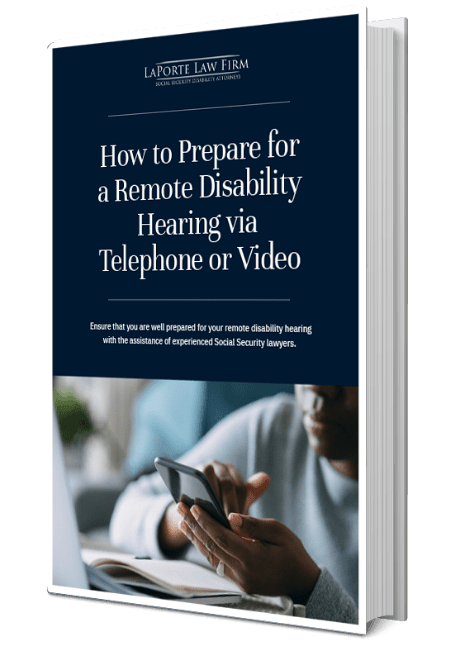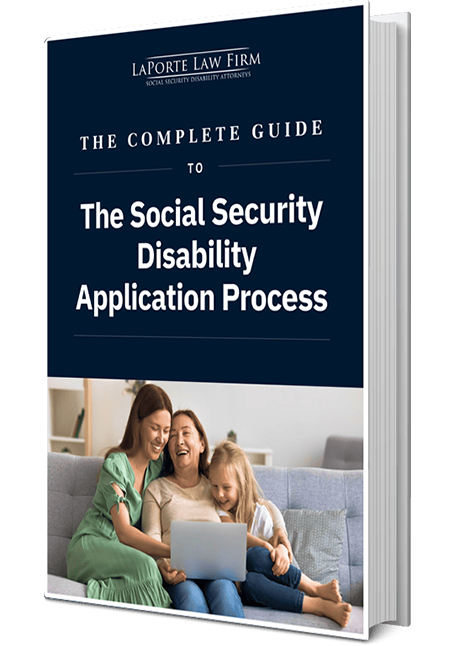
Understanding Social Security benefits can feel overwhelming, especially when your family income includes benefits such as SSDI (Social Security Disability Insurance) and SSI (Supplemental Security Income). If your spouse receives SSDI and you’re wondering whether you can still qualify for SSI, you are not alone. These programs may sound similar, but they follow very different rules, especially when it comes to marriage and income limits.
In this article, we will break down how SSDI and SSI interact, explain what you need to know as a married applicant, and help you understand your eligibility options.
Understanding SSI and SSDI
Supplemental Security Income is a needs-based federal assistance program designed for low-income individuals who are aged, blind, or disabled. It is funded by general tax revenues, not Social Security taxes. To qualify, you must meet strict income and resource limits, regardless of your work history.
Social Security Disability Insurance, on the other hand, is based on your work history and earnings. If you have paid into Social Security long enough and become disabled, you may qualify for SSDI. It is not income-based, and it is funded through payroll taxes.
The table below summarizes the key differences between SSI and SSDI.
| Feature | SSI | SSDI |
| Based On | Financial need | Work history and earnings |
| Funded By | General tax revenue | Social Security taxes |
| Income/Asset Limits | Yes | No |
| Health Insurance Provided | Medicaid | Medicare |
Income limits for SSI
SSI has strict income caps. In 2025, the federal benefit rate (FBR) is approximately $967 per month for individuals and $1,450 per month for couples. If your household income, including your spouse’s SSDI, is too high, you may not qualify for SSI.
Resource exclusions in SSI
Not all assets count toward your eligibility. Your primary residence, one vehicle, household goods, and burial plots are excluded. However, cash, bank accounts, and investments are counted.
How marital status impacts SSI eligibility
Marriage significantly impacts SSI eligibility. If you are married, your spouse’s income (even from SSDI) can be “deemed” to you, which could push your income over the SSI threshold.
Can My Spouse’s SSDI Affect My SSI Eligibility?
Yes. That’s because SSDI benefits are considered “unearned income” for SSI purposes. So, if your spouse receives SSDI, that income is typically deemed to you when determining your SSI eligibility and payment amount. This means that your SSI benefit may be reduced or eliminated depending on the amount of SSDI your spouse receives.
For example, if your spouse’s SSDI benefit is $1,500 per month, and you are eligible for the full individual SSI benefit of $967, your SSI payment would be reduced to $0, as the SSDI income exceeds the SSI benefit and the couple’s maximum income cap. However, if your spouse’s SSDI benefit is less than $1,500, you may still receive a reduced SSI payment. In general, SSA will subtract $85 from the ineligible spouse’s income, then subtract $1 for every $2 of income from the SSI benefit. This is due to the concept of “spousal deeming”, which we address later on in this blog and in our article on spousal deeming rules.
How is household income calculated?
The Social Security Administration (SSA) looks at gross household income, including unearned income such as SSDI. In 2025, if your spouse receives SSDI above $1,450, it could make you ineligible for SSI, even if you personally have no income.
What happens if only one spouse gets SSDI?
If only your spouse receives SSDI and you apply for SSI, your eligibility will depend on:
- His/Her monthly benefit amount
- Your shared household expenses
- Any other income or resources you may have
Applying for SSI While Your Spouse Receives SSDI
After you review your SSI eligibility requirements, you can apply in any of the following forms:
- Online at ssa.gov after you create your MySocialSecurity account.
- By calling the SSA at 1-800-772-1213 (or TTY 1-800-325-0778 if you are deaf or hard of hearing) and making an appointment to apply for SSI.
- By visiting a local Social Security office, but if you do, scheduling an appointment first will avoid unnecessary delays.
You will need to provide documentation about your income, assets, living situation, and spouse’s SSDI benefits.
If you have any questions on how to apply and prepare your application for SSI benefits, you can contact LaPorte Law Firm for a free consultation.
Common challenges and SSI claim denial
Common reasons for denial include:
- Exceeding income limits (due to spousal SSDI)
- Insufficient documentation
- Errors in reporting resources
Appeals are possible, and legal help can increase your success rate.
When legal help makes a difference
An attorney or disability advocate can:
- Clarify spousal deeming rules
- Help gather financial documents
- Represent you in appeals if your claim is denied
Can You Get Both SSI and SSDI?
So, is concurrent eligibility for SSI and SSDI possible? Yes, some people qualify for both SSDI and SSI, especially if their SSDI benefit is below the SSI maximum. This often happens when someone has a limited work history and low SSDI payments.
How to Navigate Concurrent Benefits
If you are applying for both SSI and SSDI, the SSA will automatically assess your eligibility for each program. You will still need to meet the SSI income/resource limits even if you already receive SSDI.
Living Arrangements and SSI
If you live with others and share expenses, the SSA may reduce your SSI based on what is called in-kind support and maintenance. Living independently can sometimes lead to higher payments.
If you live with other people, be sure to clearly document who pays for what. If your spouse covers most household expenses, it may be counted as in-kind income, thus reducing your SSI.
SSI vs. Other Assistance Programs: How SSI Treats Married Couples Differently
SSI uses a “marriage penalty” approach. Couples are entitled to 25% less than they would get individually. Other programs such as SNAP or Medicaid often use different calculations and may be more favorable to couples.
Comparing income calculations
SSI’s income rules are among the strictest of any federal program. For example:
- Earned income from work is partially excluded.
- The first $65 per month and any unused portion of the $20 unearned income exclusion, plus one-half of the remainder
- Impairment-related work expenses (IRWEs) of the disabled and work expenses of the blind
- Income set aside or being used to pursue a Plan for Achieving Self-Support (PASS) by a disabled or blind individual
- The first $30 of infrequent or irregularly received income in a quarter
- Unearned income, such as SSDI, is not excluded much, making it more impactful.
- The first $20 per month
- Income set aside or being used to pursue a PASS by a disabled or blind individual
- State or local assistance based on need that is wholly funded by the state or local government
- Rent subsidies under HUD programs and the value of supplemental nutrition assistance (or SNAP, formerly referred to as food stamps)
- The first $60 of infrequent or irregularly received income in a quarter
Important Concepts to Understand
To make your SSI and SSDI application less daunting, it’s helpful to understand the terms you’ll encounter throughout the process, such as spousal deeming, earned and unearned income, and PIA.
What is spousal deeming?
Spousal deeming is the process the SSA uses to assign part of your spouse’s income to you for SSI calculations, even if you do not personally receive that money.
Earned vs. unearned income
Earned income refers to the money you receive as compensation for work you perform. This many include wages, tips, and net earnings. On the other hand, unearned income includes money received from sources other than work, such as Social Security benefits (including SSDI itself, which is considered unearned income for SSI purposes), pensions, unemployment benefits, interest income, dividends, alimony, and gifts.
SSI treats these differently, with stricter limits on unearned income.
What is PIA?
PIA, or primary insurance amount, determines your SSDI benefit based on your average lifetime earnings. While it doesn’t affect your spouse’s SSI directly, it influences whether you fall within income limits.
Getting Help: Professional Support Is Key
When applying for Social Security benefits, seeking professional support can significantly ease the burden and improve your chances of a successful outcome. Engaging experienced advocates or attorneys provides invaluable guidance and expertise throughout the intricate process.
Talk to a disability attorney or advocate
Understanding all the nuances of SSDI, SSI, and spousal rules is not easy. A legal expert can:
- Clarify your eligibility
- Maximize your benefits
- File appeals if needed
Resources that can help
- Social Security Administration (SSA.gov)
- Local legal aid offices or nonprofits such as the National Disability Rights Network
You can also contact LaPorte Law Firm to discuss your specific situation. Our experienced team can provide personalized guidance and support every step of the way.
FAQ
Yes, but it depends on your combined income and assets. Your spouse’s SSDI could reduce or eliminate your SSI eligibility.
It may be partially “deemed” to you as income, possibly putting you over the SSI income limit. If, after deductions, the deemed amount puts you over the couple’s income threshold of $1,450.00, your SSI application might be denied, or your benefit amount reduced.
Yes. For couples, the income cap is $1,450 per month (2025), and your spouse’s SSDI counts toward that.
Concurrent benefits are possible under the right conditions and depending on your SSI eligibility criteria. If your spouse is on SSDI and you are wondering whether you can receive SSI, the answer is “maybe,” depending on your total income and household situation. The key is understanding how spousal deeming, income limits, and living arrangements impact your eligibility.
















